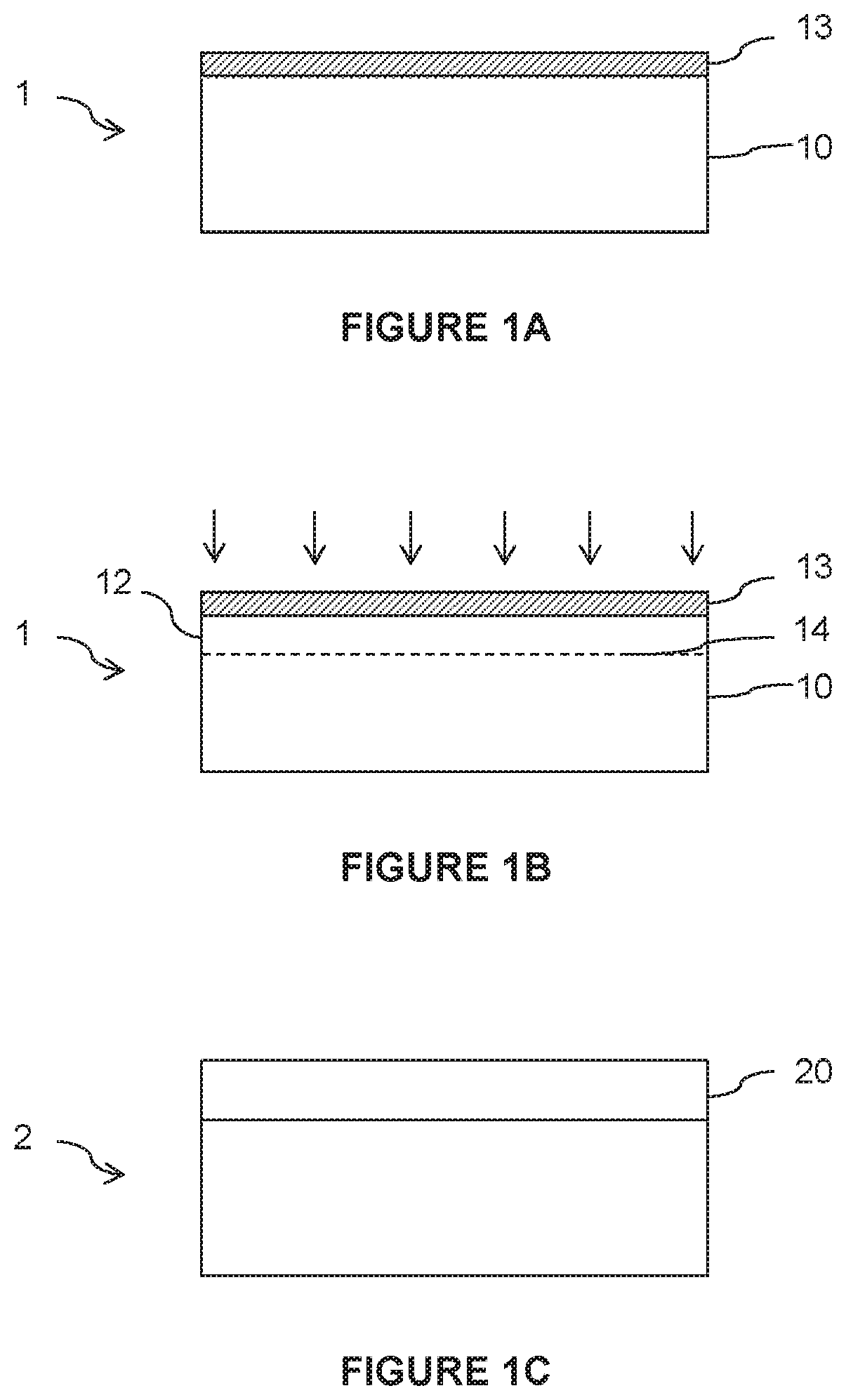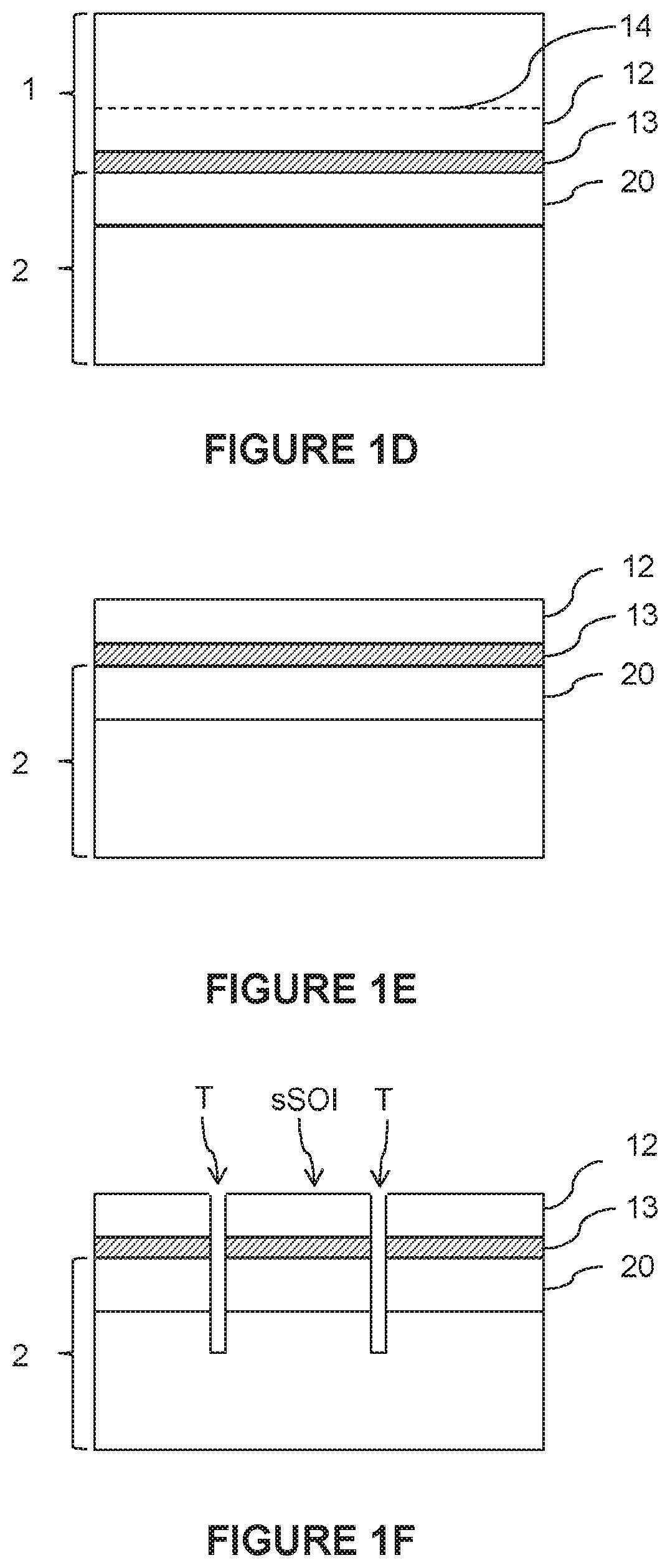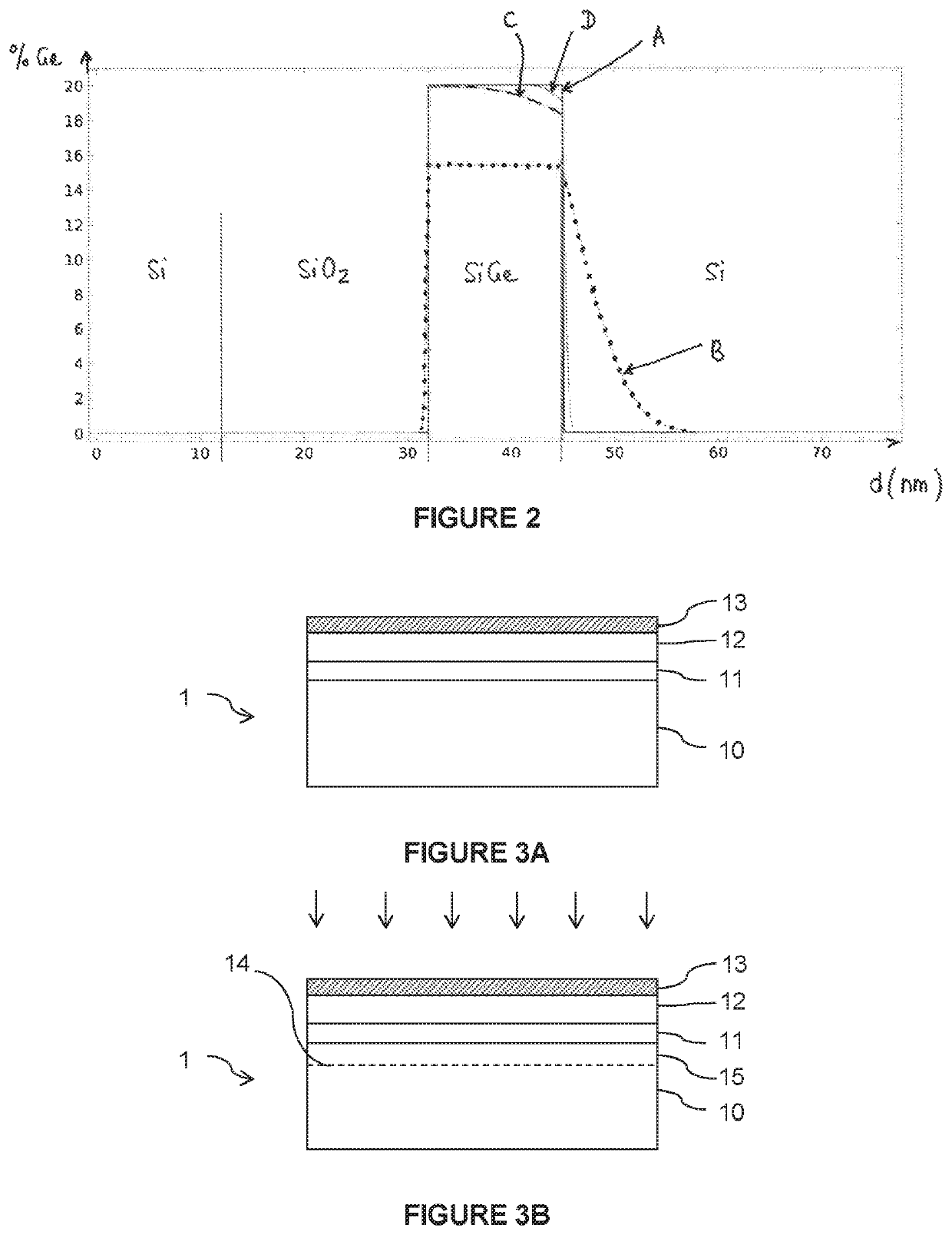Method for fabricating a strained semiconductor-on-insulator substrate
a technology of semiconductors and substrates, applied in semiconductor/solid-state device manufacturing, basic electric elements, electric devices, etc., can solve the problems of chemical-mechanical polishing not being compatible, loss of effectiveness in transferring strain from the layer to the transferred monocrystalline silicon layer, and inability to use conventional thermal smoothing techniques on ssoi substrates containing silicon-germanium layers. achieve uniformity and roughness
- Summary
- Abstract
- Description
- Claims
- Application Information
AI Technical Summary
Benefits of technology
Problems solved by technology
Method used
Image
Examples
Embodiment Construction
[0055]A donor substrate is provided that comprises at least one monocrystalline semiconductor layer that is intended to form the strained layer of the sSOI substrate.
[0056]The donor substrate is a composite substrate, i.e., it consists of at least two layers of different materials, including the monocrystalline semiconductor layer, which is arranged on the surface of the substrate.
[0057]More specifically, the donor substrate comprises, in succession, a monocrystalline carrier substrate, an intermediate layer and the monocrystalline semiconductor layer, the intermediate layer forming an etch-stop layer with respect to the material of the carrier substrate and to the material of the monocrystalline semiconductor layer. To achieve this, the intermediate layer is made of a material having a chemical composition that differs from that of the carrier substrate and of the monocrystalline semiconductor layer, the choice of materials potentially being made according to the nature of the etch...
PUM
| Property | Measurement | Unit |
|---|---|---|
| thickness | aaaaa | aaaaa |
| thickness | aaaaa | aaaaa |
| thickness | aaaaa | aaaaa |
Abstract
Description
Claims
Application Information
 Login to View More
Login to View More - R&D
- Intellectual Property
- Life Sciences
- Materials
- Tech Scout
- Unparalleled Data Quality
- Higher Quality Content
- 60% Fewer Hallucinations
Browse by: Latest US Patents, China's latest patents, Technical Efficacy Thesaurus, Application Domain, Technology Topic, Popular Technical Reports.
© 2025 PatSnap. All rights reserved.Legal|Privacy policy|Modern Slavery Act Transparency Statement|Sitemap|About US| Contact US: help@patsnap.com



